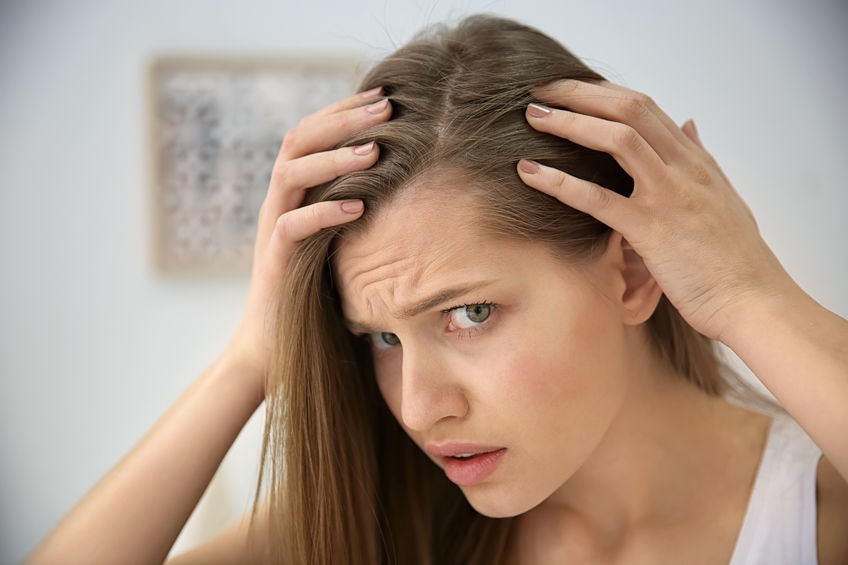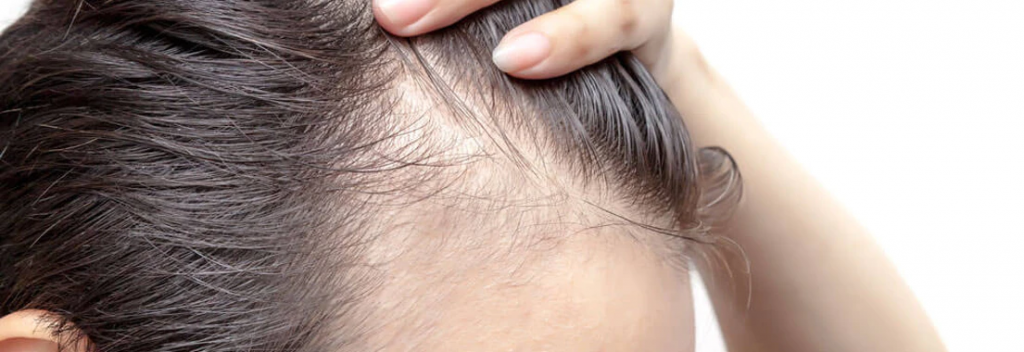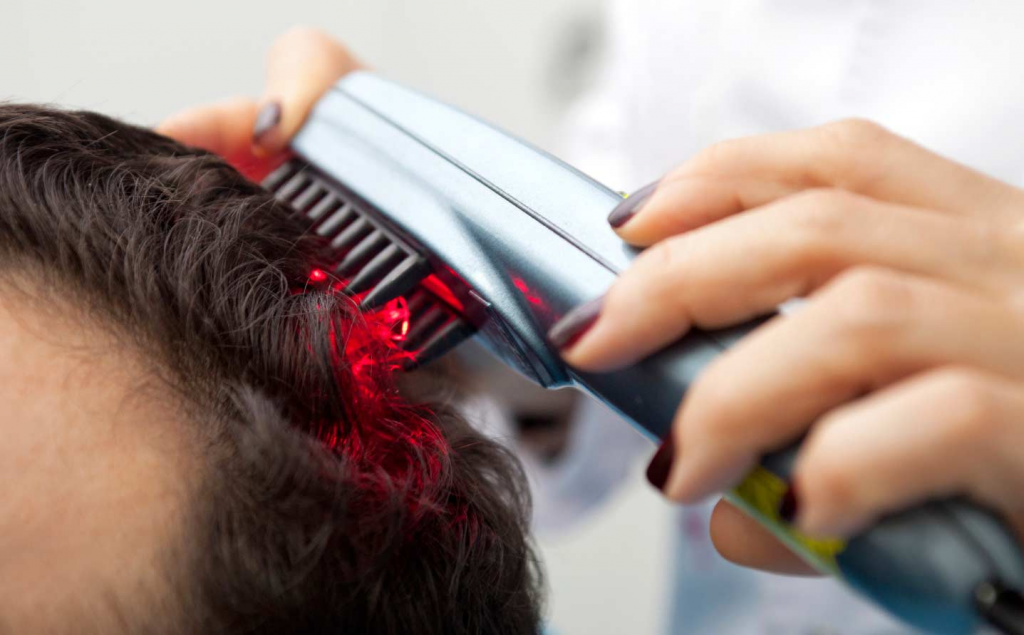Alopecia is an autoimmune disease that causes hair to fall out. There are many symptoms of alopecia, and the most telling sign is bald patches on the scalp, back, or other areas of your body.
We’ll tell about what alopecia is, how it is diagnosed, and what treatment methods are used, including heliotherapy.
Causes of alopecia
There are many causes of alopecia, but most cases have been attributed to a hormone imbalance or an autoimmune disorder.

The body’s immune system mistakenly attacks hair follicles, leading to breakage and loss of scalp hair. In women, it usually starts as a gradual thinning of hair on the top and front areas of the head. In men, baldness typically begins at the temples and forehead but may cover the entire scalp.
The following factors can cause alopecia:
- Hormonal changes are those brought about by pregnancy or childbirth; menopause; thyroid, pituitary gland, or adrenal gland disorders.
- Autoimmune conditions — where the body’s immune system mistakenly attacks its cells and tissues. Autoimmune diseases associated with alopecia include Hashimoto disease (underactive thyroid), Graves disease (overactive thyroid), vitiligo (depigmentation of the skin), and pernicious anaemia (B12 deficiency).
- Medications — such as chemotherapy drugs used to treat cancer, high blood pressure medications called beta-blockers, and the acne medication isotretinoin.
- Stress — severe stress can trigger temporary hair loss in women who are genetically predisposed to FPB. Still, it is unlikely to cause permanent hair loss unless combined with other factors such as an autoimmune disease or certain medications.

Symptoms of alopecia
- Hair loss on the scalp is patchy, thinning hair along the forehead or crown of the head; hairs are still growing, but they are turning grey.
- A receding hairline with bald spots above both ears and at the top back of the head (in men) is a typical sign of male pattern alopecia.
- The hair will become dry and coarse. If you pull on a strand of the hair, only a few hairs come out because patches of your scalp are balding.
- The skin on your scalp may become flaky.
- Itching, burning, or soreness of the scalp are signs that you have a fungal infection (dandruff) associated with alopecia.
Treatment
Medical treatments
There are several medical treatments available for hair loss. These include Minoxidil and Finasteride.
Minoxidil is applied to the scalp in liquid or foam form once a day. It has been proven effective at stimulating hair follicles, increasing their size, and prolonging anagen (the active growth phase of the hair cycle). It is important to understand that Minoxidil does not cure alopecia, and it will only work as long as you continue using it.
Finasteride, also known as Propecia or Proscar, has been used for years in treating men with male pattern baldness. Finasteride works by suppressing the enzyme Type II DHT (dihydrotestosterone), a potent hair loss stimulator. In clinical trials, men responded to finasteride therapy by regrowing hair and maintaining its thickness for as long as they took the medication.
Injections
Some people who suffer from alopecia areata receive injections of corticosteroids. Corticosteroids, also known as steroid hormones or simply steroids, decrease inflammation to help promote hair growth.
Oral treatments
Oral treatments for hair loss are available (for example, Carospir, Aldactone), but it is important to note that they do not work overnight. They take time and require patience since results vary on the individual being treated.
Oral medications may also have side effects, so patients should consult with their doctor before beginning treatment.
Light therapy

Heliotherapy is a popular treatment for alopecia. It involves exposing the scalp to light from special bulbs or lasers, which may stimulate hair follicles and reduce skin inflammation on your scalp. Bulbs with wavelengths in red, infrared, and near-infrared ranges are most effective against hair loss because they penetrate deeper into the skin than other wavelengths.
Light therapy is not a cure, but it can promote hair growth in some people with alopecia areata and slow its progression in others.